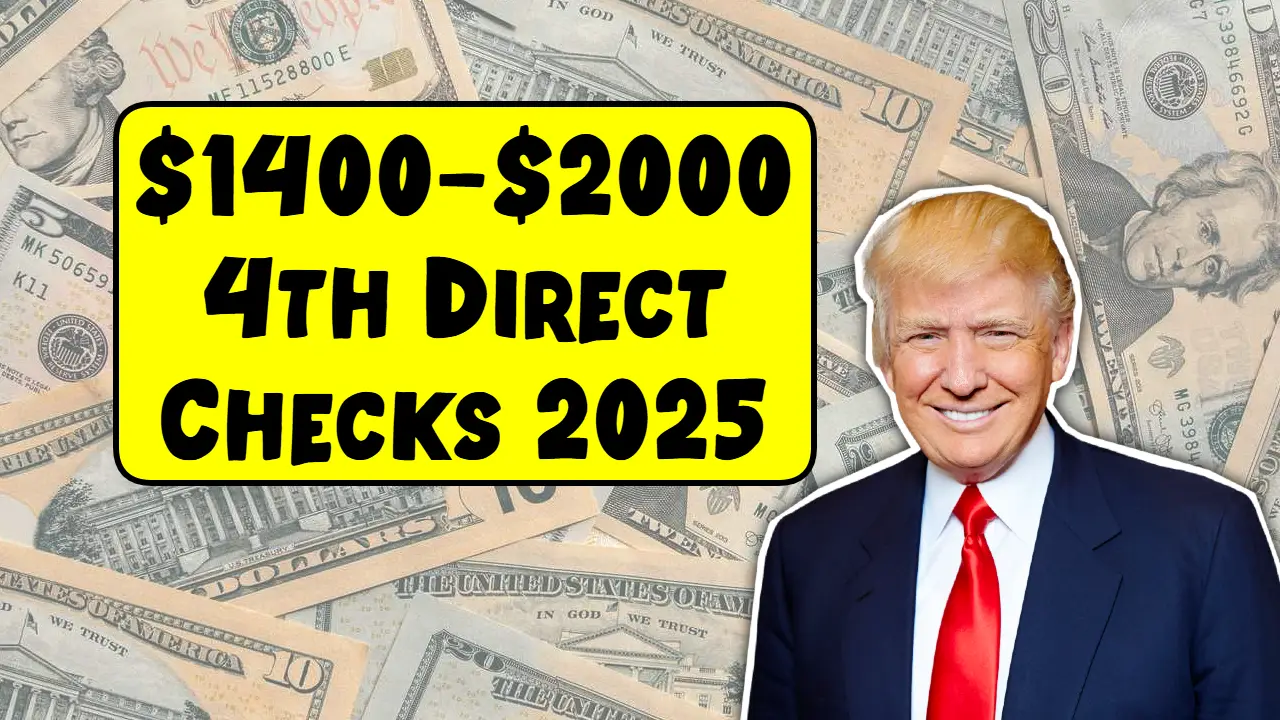As the new year begins, Americans wonder if another batch of direct payments is on the way. The fourth batch of direct payments, which ranges from $1,400 to $2,000, is generating a lot of noise. But the key question remains: Will you be eligible for these payments? This article will explain all you need to know, including eligibility requirements, practical recommendations for claiming the payment, and official resources to help you through the procedure.
$1,400-$2,000 in 4th Direct Payments in 2025
The planned $1,400 to $2,000 direct payments in 2025 may provide much-needed assistance to millions of Americans. Understanding the eligibility criteria, compiling your financial papers, and staying informed through credible sources can ensure a smooth process for claiming your payment.
Direct payments, sometimes known as stimulus cheques, are used by the US government to provide economic aid during difficult times. Previously, direct payments were made to individuals and families under financial stress as a result of large disruptions, such as the COVID-19 epidemic. These payments served as a safety net, bringing much-needed cash flow to households and boosting economic activity through consumer spending.
In 2025, debates for a new round of payments are fueled by ongoing economic worries, such as growing inflation, higher living costs, and the need to give financial security to low- and middle-income people. Policymakers want to boost consumer spending and maintain economic stability during uncertain times, particularly when households deal with higher-than-expected housing, grocery, and healthcare costs.
Economic indicators such as wage stagnation and unemployment rates are significant motivators for these suggested payments. Policymakers have emphasized the need for direct payments in addressing inequities, particularly for communities that continue to struggle economically despite earlier rounds of aid. Experts believe that this strategy can effectively stimulate growth in failing local economies while allowing households to recuperate.
Unlike payments made in 2020 and 2021, the 2025 direct payments may have improved criteria to better target individuals in need. For example, income thresholds and family size modifications may play a larger role this time around. Furthermore, there is anticipation that payouts will contain inflation-based calculations to provide more personalized aid for individuals living in high-cost locations. These adjustments seek to establish a balance between broad economic support and fiscal responsibility.
Eligibility Criteria
The following are the eligibility criteria:
Income Requirements
Eligibility is normally determined by your adjusted gross income (AGI), as reported on your most recent tax return. Here’s a breakdown:
- Single filers with AGI up to $75,000 are eligible for full payment; phase-outs may apply up to $100,000.
- Married filing jointly: AGI up to $150,000 is eligible for full payment; phase-outs may apply up to $200,000.
- Head of household: AGI up to $112,500 is eligible for full payment; phase-outs may apply up to $150,000.
Family Size and Dependents
Families with dependents usually earn larger benefits. For example, parents may receive an additional $500 to $1,000for each eligible dependant. Dependents are children under the age of 17 or older who are claimed on your tax return.
It’s worth noting that the definition of an eligible dependent may be expanded this time to include older students or disabled adult dependents who were previously excluded.
Tax Filing Status
To be eligible, you must have filed your taxes or receive federal benefits (such as Social Security). Non-filers may need to use a specific IRS tool to claim the money. In past rounds, resources such as the Non-Filers portal assisted people who had not filed tax returns due to low income. If a similar technology is released in 2025, it will be an invaluable resource for folks who are otherwise forgotten.
Citizenship and Residency
You must have a valid Social Security number (SSN) and complete the residency requirements. Non-citizens holding Individual Taxpayer Identification Numbers (ITINs) may not be eligible unless indicated. Lawmakers are debating whether to add some types of non-citizen residents, such as DACA participants or those on work visas, to expand coverage to vulnerable populations.




